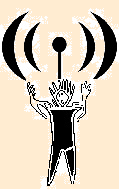The human body is a crystalline lattice that forms a dipole antenna that radiates from the gut area out toward the head and feet and/or out toward each hand. The head and feet carry opposite charges as do each hand. Piezo crystals, which convert electrical energy into mechanical energy and vice versa, are found in the bones, intestines, ligaments, tendons, and cartilage. The body is also full of liquid crystals and minerals that make up the lattice. Placing the body in different positions changes how the crystalline lattice is oriented to the Earth plane, affecting which frequencies it transceives. Changing positions also affects the length of the antenna, which is an important parameter in frequency selection.
The condition of the soil around an antenna also determines how well it transceives. Rich soil amplifies the antenna’s ability to radiate and increases the range of frequencies the antenna can receive. Perhaps this is why so many practitioners prefer to do their Tai Chi exercises in a park setting. Broadcast engineers have long known that using multiple antennas in specific arrays also enhances the ability to transceiver. Participating in group Tai Chi or meditation circles has this same effect.
Cell membranes are liquid crystal structures. A single cell in the body is a very small, very short antenna. Because it is so short, the frequency it transceives is very high and loaded with energy. Individually, each cell is either acting as a broadcast antenna and transmitting its status or acting as a receiving antenna to obtain what it needs. Collectively, similar cells transmit their own unique signal. For example, liver cells differ slightly from spleen cells. Individually, each liver cell would transceive its own signal, but collectively, all liver cells transceive as if they are one large antenna operating on the same frequency. This is the basic principle used in acupuncture. In ancient Chinese medicine, the liver is not considered to be just one specific organ located in just one place inside the body, as Western anatomy would picture it. In ancient Chinese medical philosophy, “liver” is considered to be a specific energy, or vibration, radiating within and through the entire body system.
Until recently, biology has considered chemical reactions to be the primary mechanism for cellular communication. But recent studies show that an electromagnetic (EM) frequency is transmitted just prior to the chemical interaction. This results in a conformational shape change of the receptor molecules that reside on the surface of the cell. These shape changes have the full attention of internationally recognized pharmacologist and researcher, Dr. Candace Pert, who authored Molecules of Emotion as well as renowned cell biologist, Dr. Bruce Lipton, who authored The Biology of Belief. When the receptors become excited, they vibrate and move themselves into specific shapes. This changes the frequency at which they transceive. According to Lipton, this “creates a virtual cacophony of information” and the cell filters out “specific frequencies as behavioral signals.” Dr. Pert refers to the receptors as keyholes. When they change shape, only specific molecules can enter them, delivering the proper chemicals to the cell. Understanding conformational shape change at the cellular level will give biology an entirely new perspective on the body as an energetic structure. It will lead directly to ushering in an era of vibrational medicine instead of interactions being based entirely on chemical exchanges.
Some content excerpted by permission from © 2008 MaAnna Stephenson

